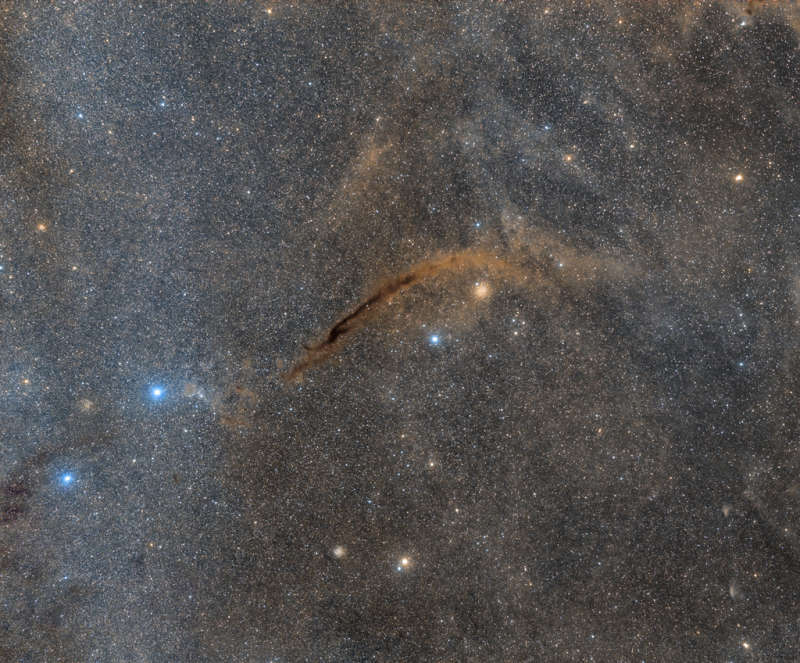
|
Credit & Copyright: Matias Tomasello
Explanation:
The delightful Dark Doodad Nebula drifts
through southern skies,
a tantalizing target for binoculars toward the small constellation
Musca, The Fly.
The dusty cosmic cloud
is seen against rich starfields just south of the
Coalsack Nebula and the Southern Cross.
Stretching for about 3 degrees across the center of
this telephoto field of view,
the Dark Doodad
is punctuated near its southern tip (upper right) by yellowish
globular star cluster
NGC 4372.
Of course NGC 4372 roams the halo of
our
Milky Way Galaxy,
a background object some 20,000 light-years away and only
by chance along our line-of-sight to the Dark Doodad.
The Dark Doodad's well defined silhouette belongs to the
Musca molecular
cloud, but its better known alliterative moniker was first
coined by
astro-imager
and writer
Dennis di Cicco in 1986 while
observing Comet Halley from the Australian outback.
The Dark Doodad is around 700 light-years distant
and over 30 light-years long.
|
January February March April May June July August September October November December |
| ||||||||||||||||||||||||||||||||||||||||||||||||
NASA Web Site Statements, Warnings, and Disclaimers
NASA Official: Jay Norris. Specific rights apply.
A service of: LHEA at NASA / GSFC
& Michigan Tech. U.
Based on Astronomy Picture
Of the Day
Publications with keywords: globular cluster - dark nebula
Publications with words: globular cluster - dark nebula
See also:
- The Horsehead Nebula
- APOD: 2025 November 26 Á Globular Cluster M15 Deep Field
- APOD: 2025 November 19 Á Chamaeleon Dark Nebulas
- APOD: 2025 September 5 Á 47 Tucanae: Globular Star Cluster
- APOD: 2025 August 14 Á M13: The Great Globular Cluster in Hercules
- APOD: 2025 July 26 Á Globular Cluster Omega Centauri
- NGC6366 vs 47 Ophiuchi
